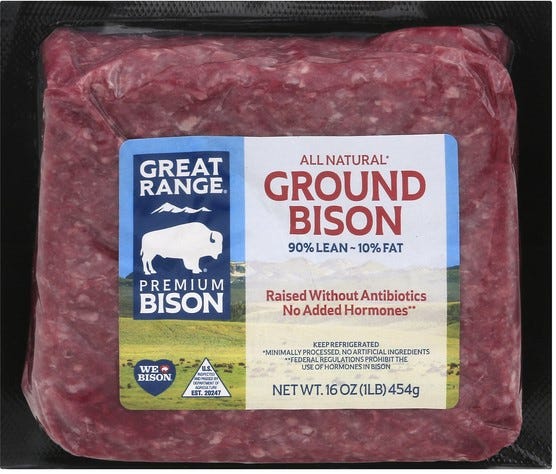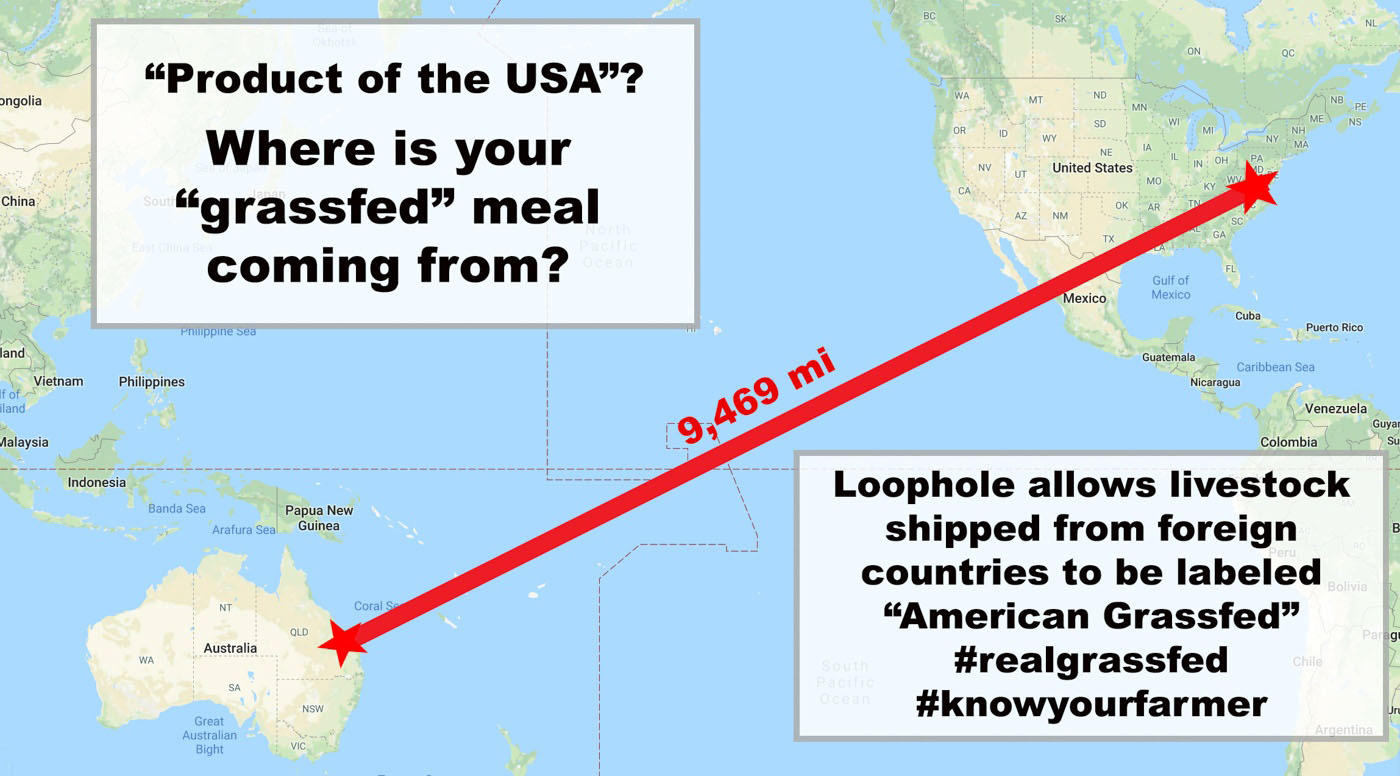In 2005, renowned author, outdoorsman, and host of Netflix’s television series MeatEater - Steve Rinella - won a lottery permit to hunt wild bison (also colloquially known as buffalo) in Alaska’s Wrangell-St. Elias National Park. With only 24 permits granted per year and facing 1,303 other brave applicants, he beat the odds of 50 to 1 to get this chance of a lifetime.
Rinella’s book “American Buffalo: In Search of a Lost Icon,” recounts his journey as well as the bison’s own history as America’s National Mammal. Facing freezing temperatures and wild predators in the mid-October Alaskan Wilderness while paddling miles downriver, in a single shot, Rinella successfully hunted and carved one free-range bison, returning to town with many pounds of prized bison meat.
Before American settlers moved West in the mid-1800s, it is estimated that between 30-60 million bison roamed North America, with the majority living in the Great Plains. Bison even still inhabit parts of Northern Mexico, where years later Rinella again hunted free range bison, this time roaming the Sonoran Desert.
Today, however, only around half a million bison live in herds of private ranchers raised for consumption, and a small amount of about 30,000 live on federal lands such as Yellowstone National Park. So, why are they making a comeback, and what would make Rinella go through such great lengths to hunt one?
Despite this decline in numbers, since 2005, America’s indigenous red meat from its largest land mammal has become increasingly popular to consume and can be found from coast to coast on the shelves of nearly all grocery stores.
To the consumer, bison and beef have many similarities, being derived from the animal family of Bovidae, with their notable characteristics of horns and hooves. It is estimated that the average American eats 55lbs of beef per year based off of United States Department of Agriculture (USDA) available data. By comparison, the National Bison Association suspects the average American consumes just .07lbs of bison annually.
We love our beef, especially from cattle ranchers that practice regenerative farming techniques. If there’s ever a medium-rare beef ribeye on a plate, I’d devour it. But why would one want to eat bison instead of beef?
Let’s dive in:
#1 Organic (without the label)
Walk into a grocery store in America and the meat section will have several choices for a brick of ground beef. Organic grass-fed 85/15, organic grass-fed pasture-raised 85/15, grain-fed 80/20, grain-fed 93/7, or grain-fed 90/10.
But ground bison? Grocery stores almost always only have one option. All of the guesswork is removed, saving time while shopping.
Bison don’t need an organic label because they mostly are already raised as such. Grass-fed? All bison are grass-fed, and only eat grain in the last few remaining months before slaughter. It must be noted though that by grass-fed we are referring to an animal that eats grass all of their life until the last few months where grain is provided to help the animal put on weight due to most consumers’ preference for taste. Some bison ranchers call the diet in their last few months as “free choice.” Bison don’t gorge on grain compared to cattle, only eating as much as they need.
Further, unlike cattle, it is illegal to administer growth hormones to bison. Additionally, bison are very rarely given antibiotics because they do not get sick as often as cattle due to their free-range living conditions as bison are not kept in crowded conditions like most cattle. Bison raised for consumption still behave like a wild animal.
“As for organic meat, regulations require that animals are raised in living conditions accommodating their natural behaviors (like the ability to graze on pasture), fed 100% organic feed and forage, and not administered antibiotics or hormones.”
-USDA
All bison are raised or very close to the USDA’s requirement for meat to be organic.
#2 More Nutrients
Bison meat contains many bioavailable nutrients necessary to fuel and repair the body, in higher amounts than beef. From data on the USDA’s website for 100 grams of grass-fed ground bison and grass-fed ground beef, Bison had higher amounts of protein, iron, potassium, phosphorous, zinc, copper, and all of the B complex vitamins with the exception of B12. Notably iron was 28% higher, as an essential mineral necessary for supplying blood throughout the body and especially important for athletes and pregnant women. In fact, the Readers Digest site The Healthy listed bison as a superfood for women due to it high iron content. Some of the bison’s earthy, mineral taste is attributable to the high levels of iron.
#3 Lower in Calories
For those out there looking to shed some pounds and consume less calories, bison is leaner than beef. From the USDA data referenced above, 100 grams of bison has 146 calories compared to 198 calories of the same amount in beef – a 35% increase. Bison also has less saturated fat for those that are concerned and trying to limit their daily intake. However, the medical community is starting to question the belief that saturated fat raises the chances of heart disease. This article on Healthline.com notes five studies on saturated fat and the results that may be of interest. Another bonus is that bison cooks faster than beef. Friends have also anecdotally told us that the lower fat content makes it taste better and makes them feel lighter and more energetic after eating than with beef.
#4 Made in America
When buying bison at the grocery store, you can always count on it being from animals homegrown in America. Whereas most grass-fed beef is imported. The USDA estimates that between 8-20% of all beef sold in the United States is from overseas. However, the organic grass-fed beef market is dominated by foreign suppliers – a 2017 industry analysis by Stone Barnes Center for Agriculture estimates that 75-80% of the grass-fed beef market is imported. Much of that beef sold in grocery stores comes from thousands of miles away from America - in Argentina, Australia, Brazil, New Zealand, or Uruguay. This is due to two main reasons: weather, as most of the U.S. experiences freezing temperatures; and lower cost of land.
Even if beef is labeled as a “product of America,” it may not necessarily be from cattle born and raised in the United States. The USDA’s Country of Origin Labeling for beef and pork products allows for meat to be processed here, even if the animal was born and raised in another country, to be labeled as a “product of U.S.A.”
#5 Better for the Environment
By comparison to cattle which prefer to stay close to water sources and run the risk of overgrazing, bison migrate and roam the land in herds so the land isn’t overgrazed. The Prairie grasses have evolved with the bison, sharing a symbiotic relationship. Bison renew the land they inhabit, as their hooves stir the soil, helping plant grass seeds.
“Buffalo is the original climate regulator. Just by how they use the grass, how they graze, how their hoofs are designed, the way they move. They did this job for us when we allowed them to be buffalo.”
-Troy Heinert, Sicangu Lakota Tribe Member and Executive Director of the InterTribal Buffalo Council
Further, their wallows, depressions created from bison rolling on the ground to cool off in the hot summer, also create microhabitats for other wildlife. The wallows hold rain water, and serve as a habitat for plants and other wildlife such as nesting grounds for frogs.
A recent study from biology researchers at three American universities concluded that the reintroduction of bison resulted in long-running and resilient increases in grassland biodiversity. The researchers found that reintroducing bison increased native plant species richness by 103%. Domestic cattle grazing also increased native plant species richness, but only by less than half as much as bison. With much of the soil being depleted by monocrop agriculture, perhaps growing America’s bison population and reintroducing it across the Great Plains could help revitalize the soil.
All of these reasons make buying a brick of ground bison well worth the extra ~$2/lb. We want to feel full, yet energetic, and have an abundance of organic nutrients while also helping our North American ecosystems. Even though we’re not hunters, we understand why Rinella wanted to have the honor of hunting bison in the wild
👉If you enjoyed this post, feel free to share it with friends!
Related Articles:









Great article! I always wondered why bison tasted more irony than beef. You answered that! If you’re interested in an awesome ranch that uses Bison, you should check out Roam Ranch in Texas. They are the ranch that raises Force of Nature bison products. They use the bisons as a way to regenerate the land and help other animals there thrive as well. They’re awesome people and have a lot of great events at their ranch, which we actually attended, and learned so much about regenerative agriculture as a whole. They also have a yearly bison harvest!